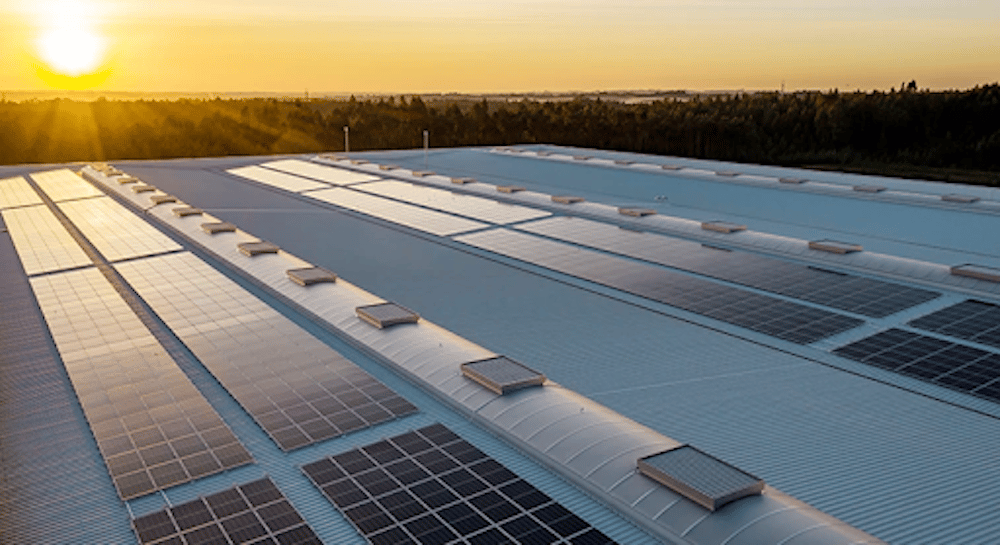Table of Contents
The usage of Tin Roof Photovoltaic Mounting Systems is widespread in western nations, with solar panels neatly positioned on the roof and supported by photovoltaic brackets. What does a PV system on a roof accomplish then?
- The roof-mounted solar system can “regulate” the temperature inside. Keep toasty in the winter and beat the heat in the summer.
- Rooftop solar mounting systems accomplish the actual activity of energy saving and environmental preservation by harnessing sunlight to produce green power.
- Direct network connectivity on the client side eliminates the need to raise the voltage, saving both money and time.
- The reinforced concrete roof is revived by the solar mounting system and roof. The original homogenized roof also displays its individuality, which is a powerful demonstration of both beauty and social responsibility. Additionally, household solar power production is eligible for a per-kilowatt-hour government subsidy, and the national grid recycles any excess energy.
Currently, there are two common construction methods for Tin Roof Photovoltaic Mounting used on roofs: one uses a track to tile the panels on an inclined roof, and the other uses a bracket to support the panels on a horizontal roof. Both of these methods are based on the roof’s sun angle and lighting effect to ensure the highest possible efficiency of the panels’ power generation.
Types of solar installation foundations for the ground
Various incentive programs have been put in place by governments all over the globe to encourage the creation and use of solar energy and other renewable energy sources. Solar energy is one of them and is seen to be a viable energy source. In general, there are two primary categories of solar power production systems: centralized and dispersed. Centralized systems include large-scale northwest ground photovoltaic power generating systems and industrial and commercial firm factory Tin Roof Photovoltaic Mounting. The primary kinds of ground photovoltaic power-producing systems are briefly presented here.
1. Independent and strip concrete foundation Benefits:
Independent and strip concrete foundation uses a reinforced extended foundation, is easy to build, has good geological adaptability, and may have relatively shallow foundation embedding depth.
Cons: Prolonged construction time; extensive independent and strip concrete foundation work; labor-intensive; extensive earthwork excavation and backfill; and significant environmental impact.
2. Spiral pile support for a foundation
Depending on whether it has a flange, a ground screw pile can be classified as either a spiral pile bracket with a flange or one without. Additionally, depending on the shape of the cotyledon, a ground screw pile can be classified as either a narrow blade continuous screw pile support or a wide blade interval screw pile support.
3. Supports for foundational impact piles
Directly driving C-section steel, H-section steel, or other structural steel into the earth by a pile driver is the major use for impact pile foundation support, also known as metal fiber rod foundation support. Although this installation technique is fairly straightforward, the drawing resistance is low.
Advantages: Steel piles are driven into the ground with a pile driver, eliminating the need for ground excavation and making the process more environmentally friendly. Steel piles are also not seasonal temperature-restricted and can be used in a variety of climatic conditions. Steel pile construction is also quick and convenient, cutting down on construction time and allowing for easier migration and recovery.
Pile driving is challenging in locations with hard soil, and driving piles in areas with more broken stones makes it simple to harm the galvanized layer. Additionally, saline-alkaline environments have low corrosion resistance.
4. Foundation made of hollow precast concrete columns
Mibet Energy Benefits: Power plants with poor geological conditions, such as hydro-optical complementary power plants and tidal flat power plants, often employ precast concrete hollow column foundations. In addition, mountain solar power stations and agricultural supplemental power stations employ it owing to the benefits of the foundation height.
Cons: Underwater construction is challenging, it’s hard to determine points, and environmental influences have a significant impact.


